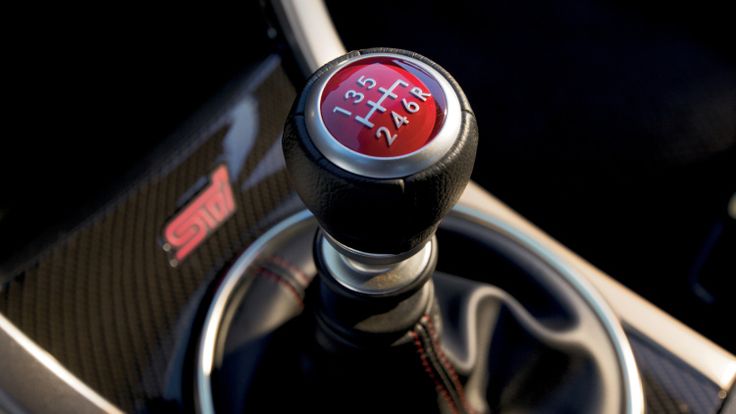When it comes to choosing between manual and automatic transmissions, drivers often find themselves torn between tradition and convenience. Let’s discuss the intricacies of each transmission type to help you make an informed decision.
Performance: In terms of sheer performance, manual transmissions offer a compelling edge. With direct control over gear changes, drivers can optimize acceleration and deceleration for a more dynamic driving experience. This hands-on approach appeals to enthusiasts seeking maximum engagement behind the wheel.
While manual transmissions excel in performance, automatic transmissions shine in smoothness and consistency. Advanced electronics and hydraulic systems ensure seamless gear shifts, resulting in effortless acceleration and deceleration. Although they may lack the raw thrill of manual transmissions, automatics offer a more relaxed driving experience.
Fuel Consumption: Historically, manual transmissions have been associated with better fuel efficiency due to their simpler design and direct control over gear changes. By optimizing gear selection and engine speed, skilled drivers can extract maximum mileage from their vehicles, making manuals a popular choice for eco-conscious drivers.
Advancements in automatic transmission technology have narrowed the fuel efficiency gap between manuals and automatics. Modern automatics feature sophisticated torque converters and adaptive shift algorithms, delivering comparable fuel economy to their manual counterparts. While they may not match manual transmissions in every scenario, automatics offer competitive efficiency without sacrificing convenience.
Speed: When it comes to outright speed and acceleration, manual transmissions have a distinct advantage. With precise gear changes and minimal power loss, manual-equipped vehicles can deliver exhilarating performance on demand. Whether launching from a standstill or executing high-speed maneuvers, manual transmissions provide the ultimate driving thrill.
While manual transmissions excel in performance driving, automatics shine in everyday usability. Advanced electronic controls and multiple gear ratios ensure seamless acceleration and optimal performance in diverse driving conditions. With lightning-fast gear changes and adaptive shift logic, automatics offer impressive speed and responsiveness without the need for manual intervention.
Maintenance: In terms of maintenance, manual transmissions are generally simpler and more robust than automatics. With fewer moving parts and less complexity, manual transmissions require less frequent servicing and are less prone to mechanical failure. Basic maintenance tasks such as fluid changes and clutch adjustments are straightforward and can often be performed by DIY enthusiasts.
Despite their complexity, modern automatic transmissions are engineered for durability and reliability. While they may require periodic fluid changes and electronic diagnostics, automatics are designed to withstand the rigors of daily driving with minimal fuss. With proper maintenance and regular servicing, automatic transmissions can provide years of trouble-free operation.
Reliability: Known for their durability and longevity, manual transmissions are renowned for their reliability. With fewer electronic components and simpler mechanical design, manual transmissions are less prone to failure and are known to last hundreds of thousands of miles with proper maintenance. From daily commuting to spirited driving, manual transmissions offer rock-solid reliability in any situation.
While modern automatic transmissions have improved significantly in terms of reliability, they may still be susceptible to electronic and mechanical failures. From solenoid malfunctions to torque converter issues, automatic transmissions require regular maintenance and occasional repairs to ensure trouble-free operation. Despite these challenges, advances in transmission technology have made automatics more reliable than ever before, with many vehicles lasting well beyond their warranty periods with proper care.
Types of Oils: Manual transmissions typically use gear oil or manual transmission fluid (MTF) to lubricate and cool transmission components. Viscosity and additives may vary depending on manufacturer specifications and operating conditions. It’s essential to use the correct type of oil for your manual transmission to ensure optimal performance and longevity.
Automatic transmissions rely on automatic transmission fluid (ATF) to provide hydraulic pressure, lubrication, and cooling. ATF comes in various formulations, including conventional, synthetic, and semi-synthetic blends, each tailored to specific transmission types and operating conditions. Choosing the right ATF is crucial for maintaining transmission health and performance.
Spare Parts: Spare parts for manual transmissions are generally more readily available and affordable than those for automatics. From clutch components to gear synchronizers, aftermarket and OEM parts are widely accessible, making manual transmission repairs more cost-effective and convenient.
Spare parts for automatic transmissions may be more expensive and harder to find due to their complexity and specialized design. From valve bodies to torque converters, OEM replacement parts may come with a premium price tag, requiring careful consideration when budgeting for transmission repairs.
In Conclusion: The debate between manual and automatic transmissions rages on, with proponents on both sides championing the virtues of their preferred transmission type. Whether you prefer the tactile engagement of a manual gearbox or the effortless convenience of an automatic, both transmission types have their own unique pros and cons. So, the next time you’re in the market for a new ride, consider your driving needs, preferences, and priorities carefully to make the best choice for your automotive adventures.

